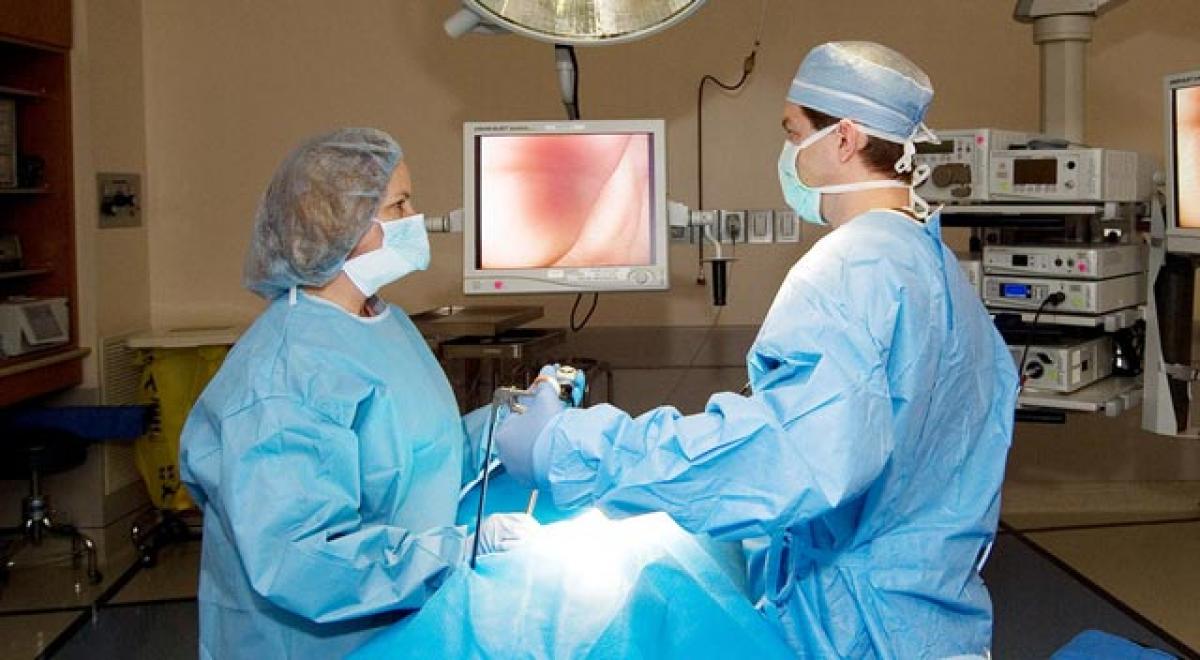Live
- Tanks, canals remain neglected despite execution of MGNREGS works
- BRS to celebrate Deeksha Diwas on Nov 29, Dec 9
- NCC Day grandly celebrated at SITAM
- CITU demands rollback of strategic sale of VSP
- 7-Year-old girl sexually assaulted in Tirupati
- PM Modi highlights govt's efforts to make Odisha prosperous and one of the fastest-growing states
- Hezbollah fires 200 rockets at northern, central Israel, injuring eight
- Allu Arjun's Family Appearance on Unstoppable with NBK Breaks Viewership Records
- Unity of hearts & minds essential for peace & progress, says J&K Lt Governor
- IPL 2025 Auction: I deserve Rs 18 cr price, says Chahal on being acquired by Punjab Kings
Just In

Sreedhar, a 55-year-old senior media professional, had undergone laparoscopic surgery to remove gallbladder stones two years ago. For the past few days, he was experiencing mild discomfort in his abdominal area.
Sreedhar, a 55-year-old senior media professional, had undergone laparoscopic surgery to remove gallbladder stones two years ago. For the past few days, he was experiencing mild discomfort in his abdominal area. The pain grew as he tried to lift heavy objects. Initially, he didn’t pay heed to it, only to receive a shock when on one fine morning his wife noticed a bulge around his navel area.
They reported it to a physician who examined the affected area and recommended a CT Scan. And as the doctor had suspected, he was suffering from ventral or incisional hernia. In the light of symptoms and other associated factors, laparoscopic ventral hernia repair (LVHR) was performed on him. An estimated 11 20 per cent laparoscopic incisions may lead to incisional hernia. While 50 per cent of these occur within the first 2 years, 74 per cent develop after 3 years.
Before LVHR transformed the norms for hernia repair, open ventral hernia repair (OVHR) was used to treat hernia defects. However, different studies recommend laparoscopic ventral hernia repair as a better technique. OVHR is achieved through suture approximation on each side of affected part. However, the biggest problem with this technique was recurrence which was reported in 41 52 per cent cases.
In order to manage high morbidities and recurrence incidences, laparoscopic approach was developedwhich brought a significant improvement in the clinical outcomes. Based on principals of open underlay repair, LVHR is known to cut down the recurrence to 10 per cent.
When compare to the open hernia repair, the laparoscopic ventral hernia repair offers a host of advantages including a reduced hospital stay, fewer perioperative complications and low hernia recurrences. Also, it can significantly bring down the surgical complications related to wound and mesh infection.
Studies reported higher incidences of cellulitis and mesh infection in case of open technique of ventral hernia repair. While open prosthetic reported a 12 18 per cent rate of wound infection, mesh infection rate was 0.6 per cent after laparoscopic repair. Similarly, the incidence of cellulitis of the trocar sites treated with antibodies was found to be as low as 1.1 per cent.
“The major technical advantage with laparoscopic approach that allows an accurate mesh fixation is that the internal abdominal wall is completely visibleduring the procedure. In addition, with LVHR,it is also possibleto uncover occult hernias not detected at the timeof preoperative procedure,” says Dr SurendraJasti, Fellow-Minimal Access Surgery, Consultant Surgical Gastroenterology, Laparoscopy - Bariatric Surgery, Manipal Hospitals Vijaywada.
It has been found thatpatients experience better quality of life after laparoscopic repair. Though, the laparoscopic procedure involves higher operative cost over open repair, advantages in terms of reduced morbidity, shorter admission period, fewer intensive care unit (ICU) admissions and significantly lower mortality may make it cost-effective in the longer run.
Apart from a few contraindications, LVHR is found to be a better alternative to treat ventral and incisional hernia. And there are plenty reasons to support it. To conclude, in LVHR, hernia defect is adequately repaired using intraperitoneal mesh fixation involving minimal soft tissue dissection, which causes less postoperative pain, reduces the period of hospital stay and convalescence and ensures earlier recovery. Moreover, it allows the patient to tolerate oral intake comparatively earlier than the open procedure.

© 2024 Hyderabad Media House Limited/The Hans India. All rights reserved. Powered by hocalwire.com







